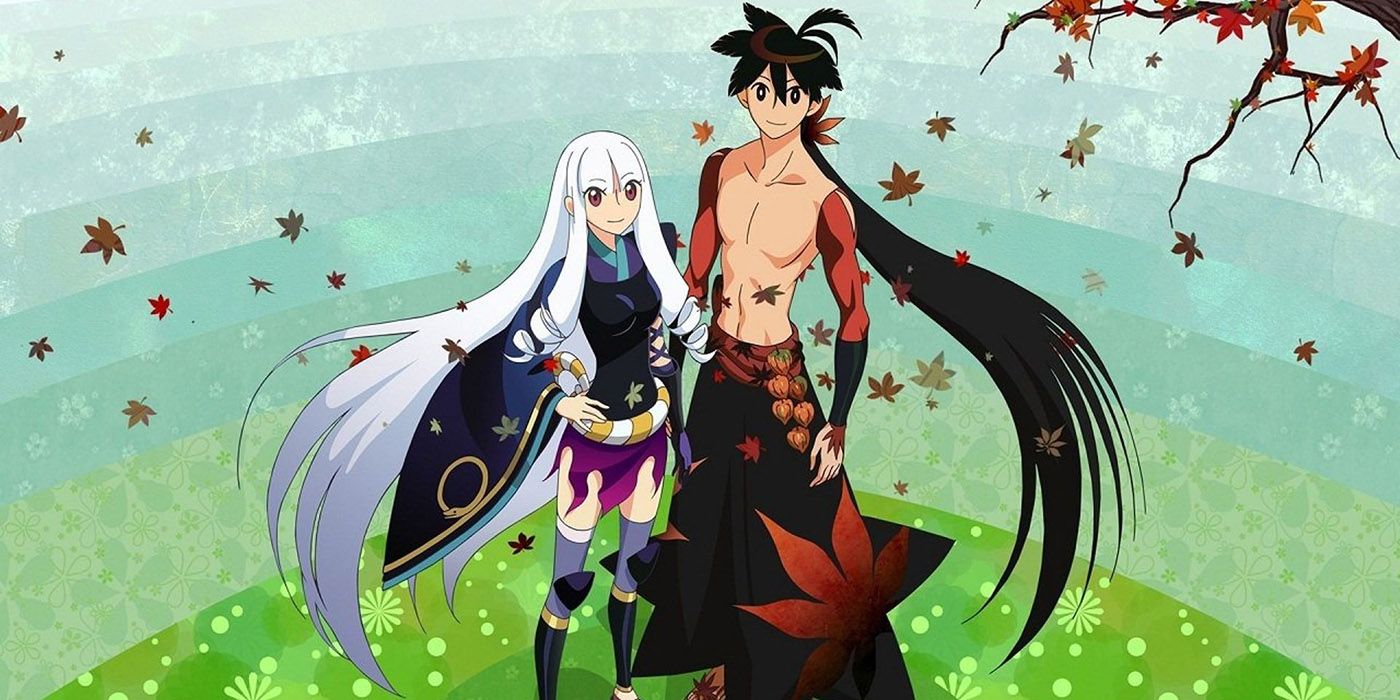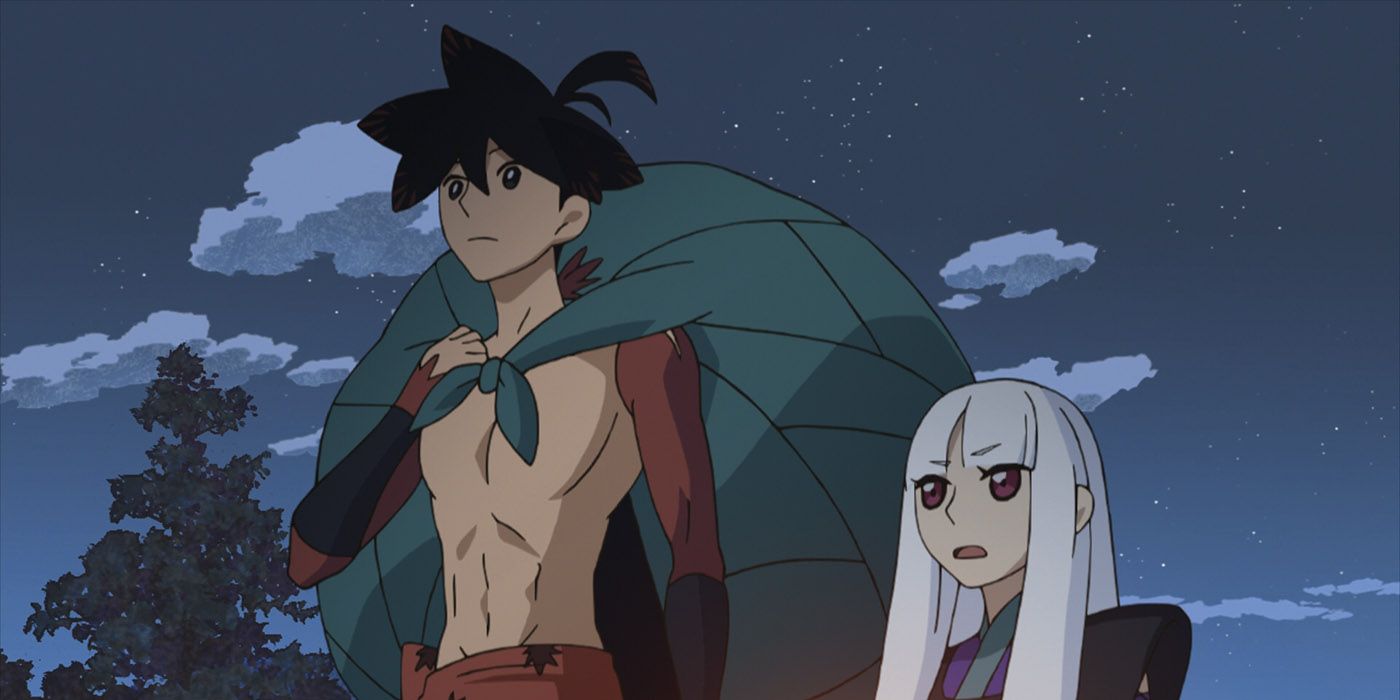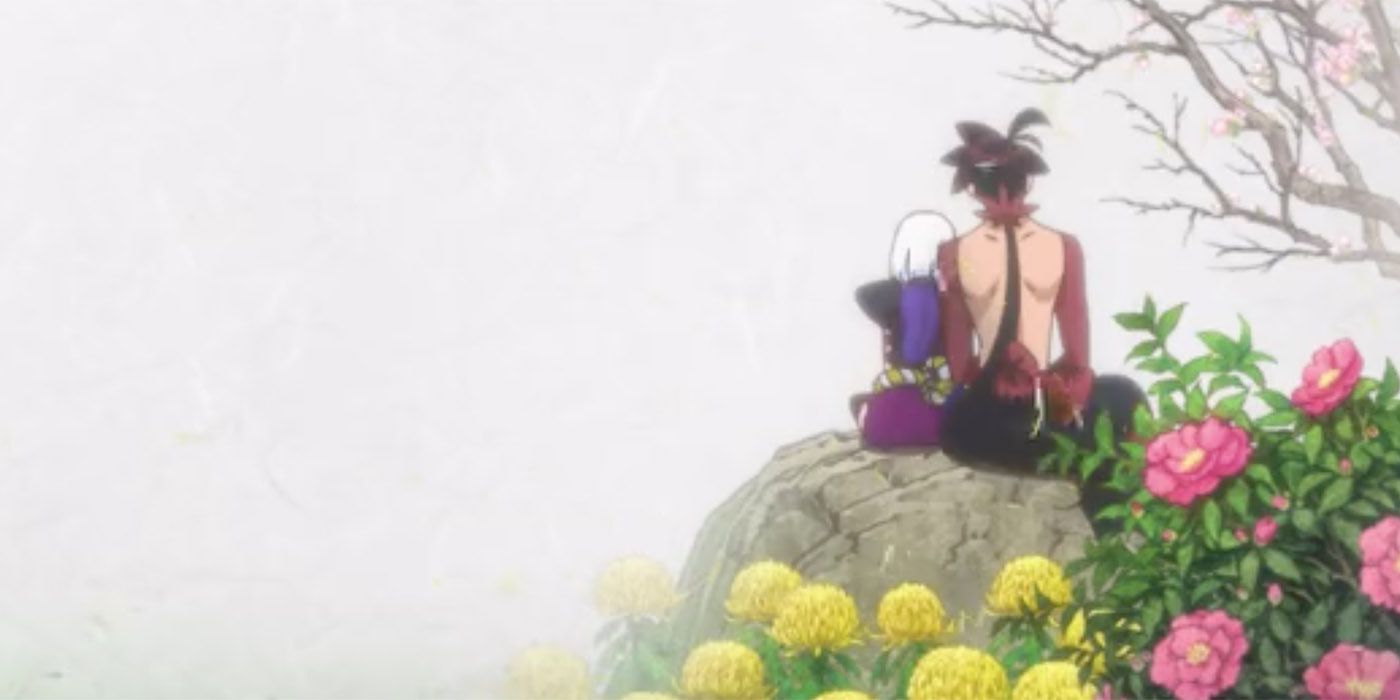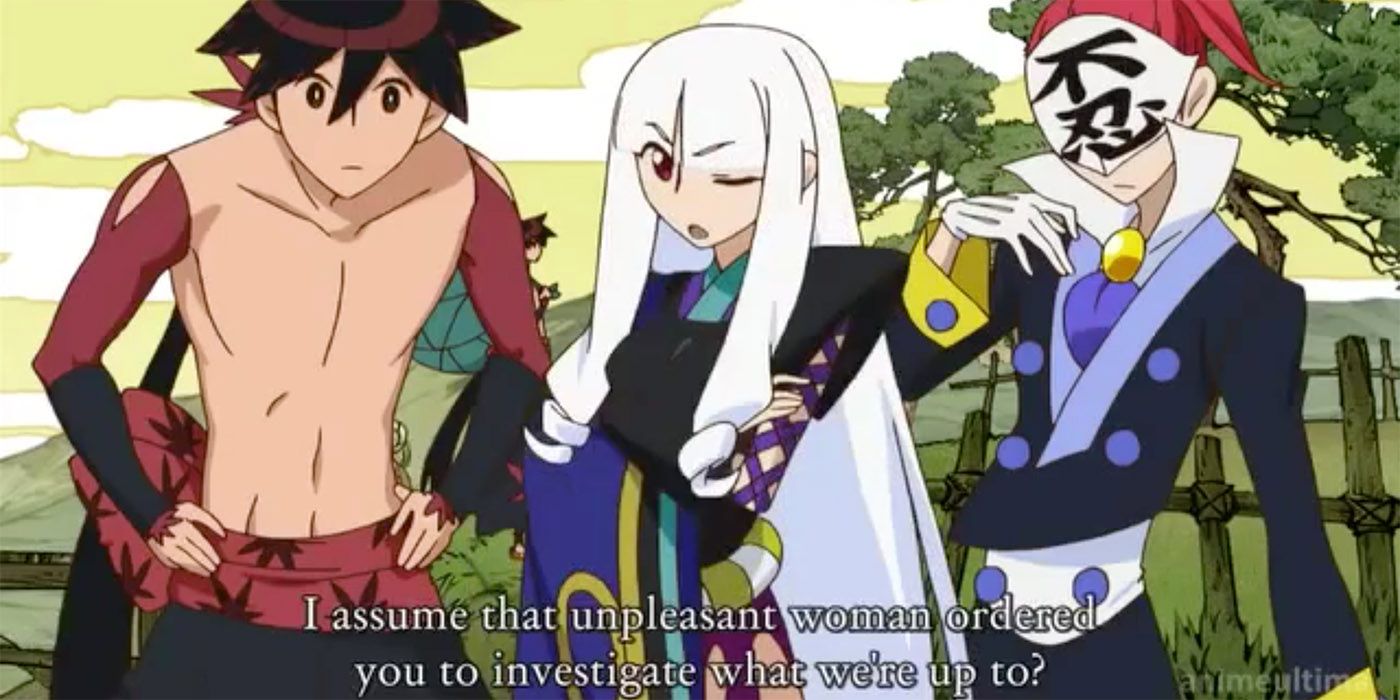When the topic of great anime is broached, Katanagatari is often an afterthought -- if a thought at all. The story follows the self-proclaimed strategist Togame and seventh Kyotōryū, Shichika Yasuri, on their quest to collect the 12 Deviant Blades. The series adapts from the light novel series of the same name, blending action and romance with gripping storytelling, while Studio White Fox's wildly unique production values really bring the novels to life.
It is honestly criminal that 10 years later, Katanagatari remains only a cult classic, as the series is a must-watch not just for anime fans, but fans of great storytelling and art in general. Anime fans that continue to leave Katanagatari on the back-burner are doing a disservice to themselves. Allow us to convince you why.
Collecting 12 Swords Should be Simple, Right?
Katanagatari is a title befitting this series, as the literal translation "sword tale" pretty much sums up the premise. In each episode, Togame and Shichika search for and eventually do battle with a wielder of a Deviant Blade in hopes of eventually collecting all 12. Simple, right? Exactly. But it is this simple premise that opens the door for Katanagatari's genius to shine through.
Katanagatari, at a glance, appears to tread a well-beaten path, and at this point, you may be expecting something along the lines of: "They find all 12 swords through the power of friendship and eventually fall in love. The end." Wrong! Katanagatari understands that its premise is simple, which allows it to cleverly defy viewer expectations at every turn, while still maintaining suspension of disbelief. We won't spoil the series for you but know this: when it looks like Katanagatari is going to turn left it just may turn right, and when you think it's going to turn right it gets out of the car and starts riding a bike.
Twists are not the only tricks up Katanagatari's sleeve, either. In spite of its basic premise, the series is, at its core, a well-written and thought-out story. The dialogue is rich and realistic and the show has a vibrantly diverse cast of characters that never feel like caricatures, providing viewers with moments that feel genuine. The lessons, triumphs and struggles that Shichika and Togame experience are relatable, and hold up even 10 years later. You'll experience a wheel of emotions as the series makes you smile, laugh, groan and maybe even cry.
Presentation Like No Other
For Studio White Fox, adapting from a dialogue-driven light novel series means just that, as the anime adapts all of these word-heavy moments perfectly. The knee jerk reaction to this may be that Katanagatari looks boring, or at least that it drags at certain points, especially given each episode's 50-minute runtime. In spite of this, Katanagatari and Studio White Fox keeps the series fresh in each and every episode through unique animation and how the series was first presented to viewers.
For one thing, during its original TV run, Katanagatari aired only once a month over the course of 12 months. This made viewing Katanagatari an event while adding a real sense of time to the travels of Shichika and Togame. The series' narrator adds to this momentous feeling by ending each episode with the phrase: "The story of Katanagatari on this month and this evening ends here." This month-long wait period not only left audiences craving the next episode but also kept the series fresh, perhaps mitigating the effects of the program's verbose nature. While viewing Katanagatari now means watching as many episodes as you like in one go, this original method of airing really added to Katanagatari's genius presentation.
Katanagatari also plays with its narrative feel by implementing unique transitions and scene compositions. Conversations between characters will sometimes be displayed in an RPG-like fashion where, comically, a speaker's mouth moves as their model is superimposed above the other members of the conversation, who will, in turn, hold a dynamic pose while waiting for their turn to speak.
The series further displays its understanding of composition in certain scenes involving characters battling multiple opponents, displaying combat in beat-em-up side-scroller video game fashion. And, in the spirit of diversifying its composition, Katanagatari sometimes depicts traversal scenes as video game loading screens or in a mini-game like fashion. In these moments, Katanagatari's ability to play with its material and to some degree poke fun at itself in a clever fashion is refreshing, as these scenes simultaneously provide comedic relief and interesting imagery, making each scene feel different from the last. For viewers, these eccentric moments make the dialogue more palatable, while at the same time, presenting compositions and transitions that are fun to track and discuss. All of this is only bolstered by the series' expansive color palette and eye-popping art style.
The icing on the cake for Katanagatari's presentation is its soundtrack. Throughout its run, the series delivers two great openings and switches its ending theme in each of its 12 episodes. Action scenes are always accompanied by intense and climactic musical compositions, while periods of downtime feel like just that; a result of the series' expansive repertoire of cool melodies and rhythmic hip-hop blends.
Simply put, Katanagatari is exceptional. All that's left for you to do is go and watch it.




